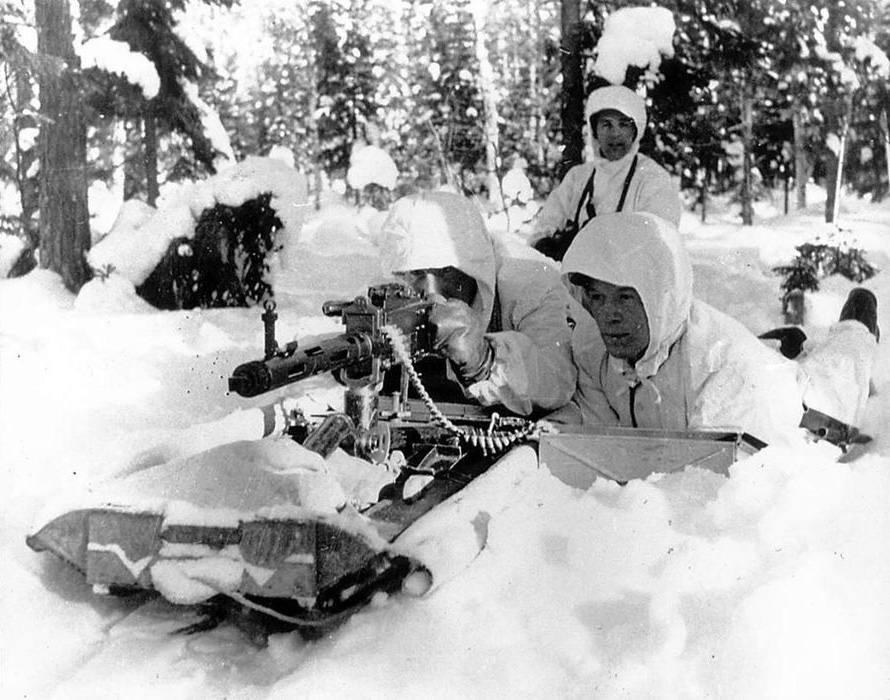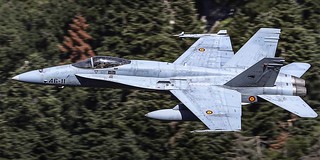The three wars of Finland between 1939 and 1945 and its strange situation in WWII
Of all the countries that took part in World War II, perhaps the one with the most peculiar and complicated history is Finland.
Independence and the Finnish Civil War
Historically Finland had been linked to Sweden from the beginning of the 13th century until the Finnish War (1808-1809), which ended in a Russian victory by which Finland became a Grand Duchy of the Russian Empire. The fall of Tsarism in 1917 and the decomposition of Russia gave the Finns an opportunity, who declared their independence on December 6, 1917. A few weeks later a Civil War broke out, which fractured Finnish society into two camps: the Red or, made up of the socialist left and supported by Bolshevik Russia, and white, made up mostly of conservatives and supported by Germany. In May 1918, the red side was defeated.

Between the end of the Finnish Civil War and 1922, Finland continued to have armed clashes with Bolshevik Russia, especially over the dominance of Karelia, the border region between southern Finland and Russia. Once those conflicts ended, Finland returned to being the peaceful and calm country it had been before. During the interwar period, Finland established itself as a democratic country, with a pluralistic parliament and in which the Social Democrats usually had the simple majority of the seats, but except in the short-lived government of the Social Democrat Väinö Tanner (1926-1927), the rest of the governments were of a different sign (agrarian, liberal-conservative and progressive) . When World War II broke out on September 1, 1939 with the German-Soviet invasion of Poland, Finland's prime minister was Aimo Cajander of the National Progressive Party.
The 'Hakaristi', the blue swastika used by Finland before the Nazis
Interestingly, Finland adopted the Hakaristi, a blue swastika on a white background, as its Air Force emblem in 1918. It was not an exceptional case: the Latvian Air Force used a red swastika in that same period. The swastika was then an emblem of good luck among aviators, with no political connotations. In those years was also worn by American airmen, and even Mongolian Red Army troops wore a swastika insignia, until its use was banned in 1922 after it was appropriated from her the German National Socialists.

The Winter War: the Soviet invasion of Finland in 1939
When the Second World War broke out, Finland was a country politically close to the Western democracies (United Kingdom, Sweden, France and the USA). In fact, most of the planes used by Finland to face the Soviet invasion of November 30, 1939, were British, American and Swedish planes. The Soviet invasion of Finland was a consequence of the secret protocol signed by Germany and the USSR in August 1939, a protocol with which the Nazis and communists also divided up Poland and the Baltic republics. Faced with this invasion, Finland received the support of the United Kingdom and France, who even planned an intervention in favor of the Finns that was prevented by Sweden's refusal to allow the passage of the Franco-British contingent. The invasion also caused notoriety in the US, as it was an aggression by a totalitarian dictatorship against a democratic country. Finland also received the support of Estonian, Swedish, Norwegian, Danish, Hungarian, Polish and Yugoslav volunteers and also some Italians moved by anti-communism. As Hitler was then an ally of Stalin, Germany vetoed the passage of all military aid to Finland through its territory and through occupied Poland.
Against all odds, the Soviet invasion of Finland was a humiliation for the USSR, which received a severe beating from the Finns in a territory they largely dominated (snowy forests and an area full of lakes) and thanks, to a large extent, to the defensive strategy of Carl Gustaf Emil Mannerheim. Finally, the armistice signed with the Soviets forced Finland to give up part of its territory, but it was a ridiculous handover compared to Stalin's initial claim of a total conquest of the country. Thus ended the first of the three wars that would involve Finland until 1945: the Winter War or "Talvisota", as it is called in that country.

The Solitude of Finland and the Continuation War (1941)
In the months that followed, Finland tried to continue to strengthen its ties with the United Kingdom and Sweden. However, the British were single-handedly enduring heavy German attacks on their own island. France had been occupied by Germany, and Sweden was not interested in risking its neutrality, besides having in Germany an important customer for its iron exports. Finland was left alone and that ended up bringing it closer to the sphere of influence of Germany in the moments before the start of the German invasion of the USSR in June 1941. When it began, Finland saw the opportunity to recover the territories lost in 1940, so that three days after the start of Operation Barbarossa (as the German invasion of the USSR was called), Finland declared war on the Soviets and launched to reclaim their territory.
That part of World War II is known in Finland as the Continuation War ("Jatkosota" in Finnish). Finnish participation in the German offensive against the USSR was quite limited, and Finland, which was still a democracy, refused to join the Axis Pact, although it did join the Anti-Comintern Pact, an anti-communist pact of the which also included a neutral country, Spain (then under the dictatorship of General Franco) and the Republic of China, which was on the allied side.

The little reaction of the Allies and the low profile of Finland in this war
The alliance between Finland and Germany was not taken very seriously by the allies. It took several months for the United Kingdom and the Commonwealth countries to respond with declarations of war. The United Kingdom made that declaration on December 5, 1941, and Finland made a reciprocal declaration of war against the UK the next day. Canada, Austria, New Zealand, and South Africa declared war on Finland in the days that followed. The Czechoslovak government in exile did the same on December 16. Significantly, no other allied country - not even the US, the Free French or the Polish government in exile - followed suit. And during the war, the Finns and the British did not engage in combat.
In turn, the Finns also kept a low profile in this war. Although they could have done so, they did not cut the railway linking the port of Murmansk with the rest of Russia, a great importance for which many supplies from the Western allies came to the USSR. Finland also did not want to participate in the Siege of Leningrad , which was a true carnage and brutal slaughter of civilians. The Finns limited themselves to securing their territory and repelling Soviet attacks.
Although the Continuation War cost the Soviets much more casualties than the Finns, Finland was a smaller and less populated country than the USSR. As the war began to go wrong for Germany, the fate of Finland was cast. The war ended with the signing of an armistice between the Finns and the Soviets while there were still German troops in Finland. The Nordic country had never formally considered itself an ally of Germany. In fact, Finland considered itself "co-belligerent" against the USSR , a term that the USSR and the allies did not accept at the end of World War II. Curiously, Finland was the only democratic country to appear as an ally of Germany and also the only one that had Jews in its army, since the Finnish government did not unleash any persecution against them (although it did deliver to Germany some Jews who took refuge in Finland).

The Lapland War (1944) against the Germans
The paradoxical situation of the Nordic country during the World War II ended up culminating in a third war, this time against Germany: the Lapland War ("Lapin Sota", in Finnish). This strange war began with the withdrawal of one of the contenders, Germany. A withdrawal that was initially peaceful but which ended up giving way to a scorched-earth tactic in Lapland, in northern Finland. In November 1944, the bulk of the German troops had already left the country on their way to Norway. The Lapland War ended in April 1945, when the last German soldiers left Finland. The role of the Soviets in this war consisted of putting pressure on and monitoring the Finns, who initially hardly harassed the Germans in their withdrawal. The Soviets wanted Finland to attack the Germans and at the same time demanded that Finland demobilize its army. The effects of this war lasted for decades in Lapland, due to the large number of mines left by the Germans in their wake.

The consequences of World War II for Finland
Finland paid the price of the Second World War for years, having to cede part of its territory to the USSR, but without losing its independence or being forced to join the Warsaw Pact, as happened to others countries that were occupied by the Soviets. It remained a neutral nation but closely watched by the USSR. All in all, it was the only country in World War II that had foreign troops on its soil but did not lose its democracy. Finland's alliances in World War II may seem strange, but they were the consequence of a policy that sought to preserve the country's independence, something the Finnish government largely achieved. What this experience entailed for Finland was a clear determination to return to defend its territory whenever necessary: today the country still has compulsory military service and has a small but well-equipped army , in addition to considerable defensive facilities.
Today, the only threat against Finland continues to be Russia, especially since the start of the Russian invasion of Ukraine (remember that Putin threatened Finland and Sweden with being the next invaded the day after attacking Ukraine), which is why both nations, traditionally neutral, have requested their admission into NATO.
---
Main image: Piotr Forkasiewicz. Artist's rendering of a Finnish Hawker Hurricane fighter shooting down a Soviet Polikarpov I-15 fighter during the Winter War (1939-1940).
|
Don't miss the news and content that interest you. Receive the free daily newsletter in your email: |
- Most read
- United States' last Hueys: Vietnam-era veterans still flying in the US Air Force
- A former secret submarine base in Estonia and its important role in the Cold War
- The distinctive garments of the regulars of the Spanish Army explained by two soldiers
- Argentina buys 24 F-16s and we can now see how they will be armed and decorated
- The infiltration of a group of Spanish explorers into the Russian aircraft carrier Minsk
- Eurofighter vs F-35: the opinions of professional pilots on these advanced fighters
- The firearms used by the Pontifical Swiss Guard, the smallest army in the world

 ES
ES







Opina sobre esta entrada: